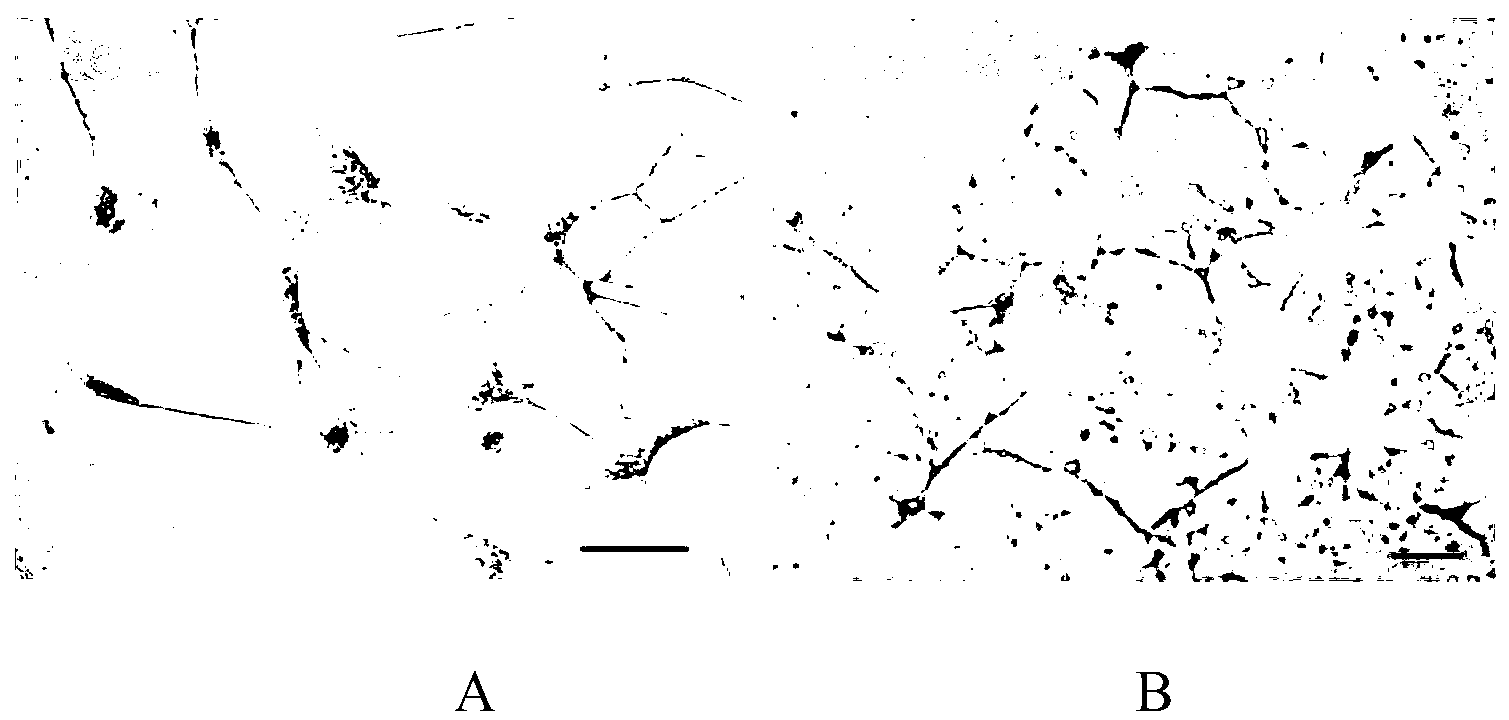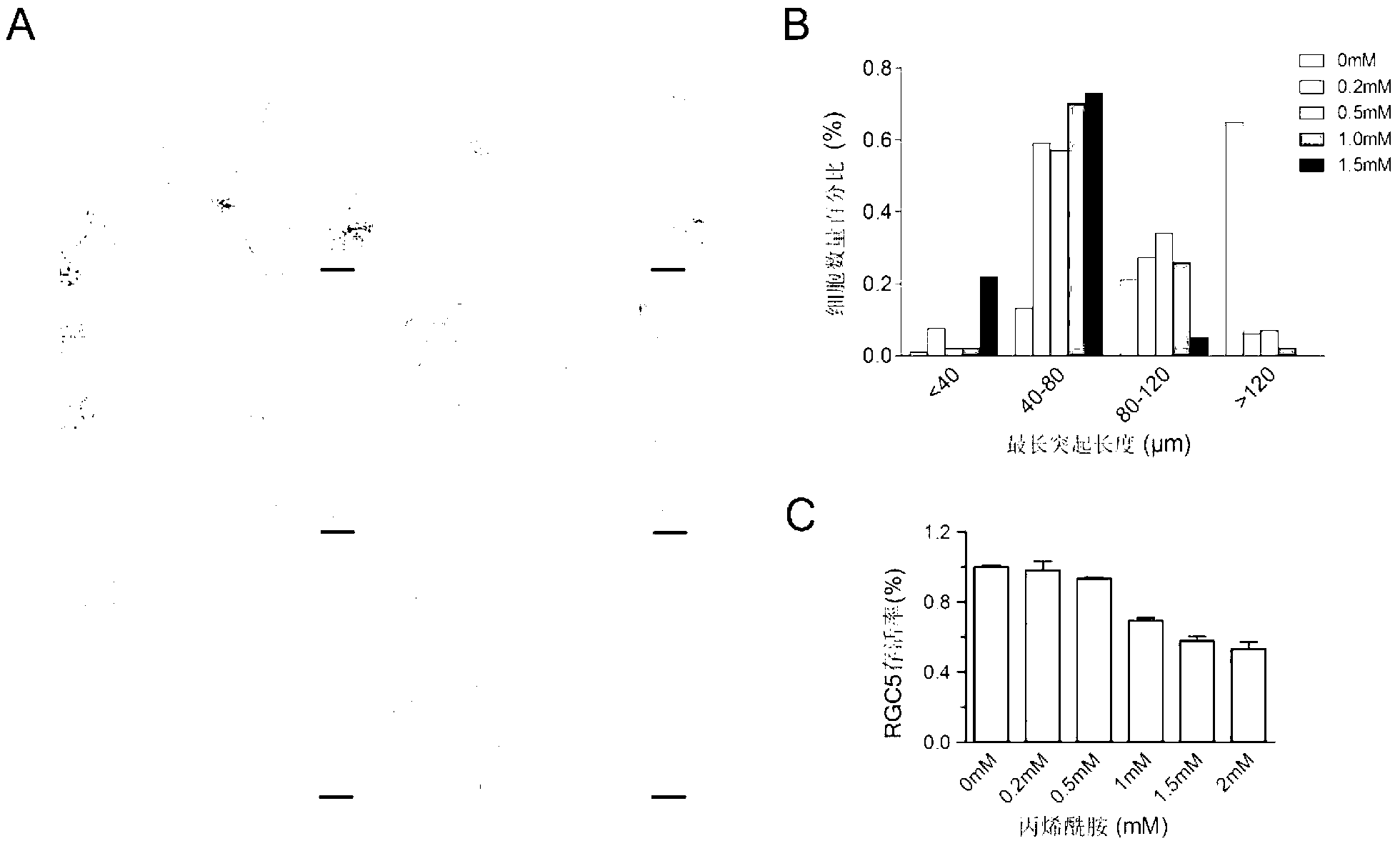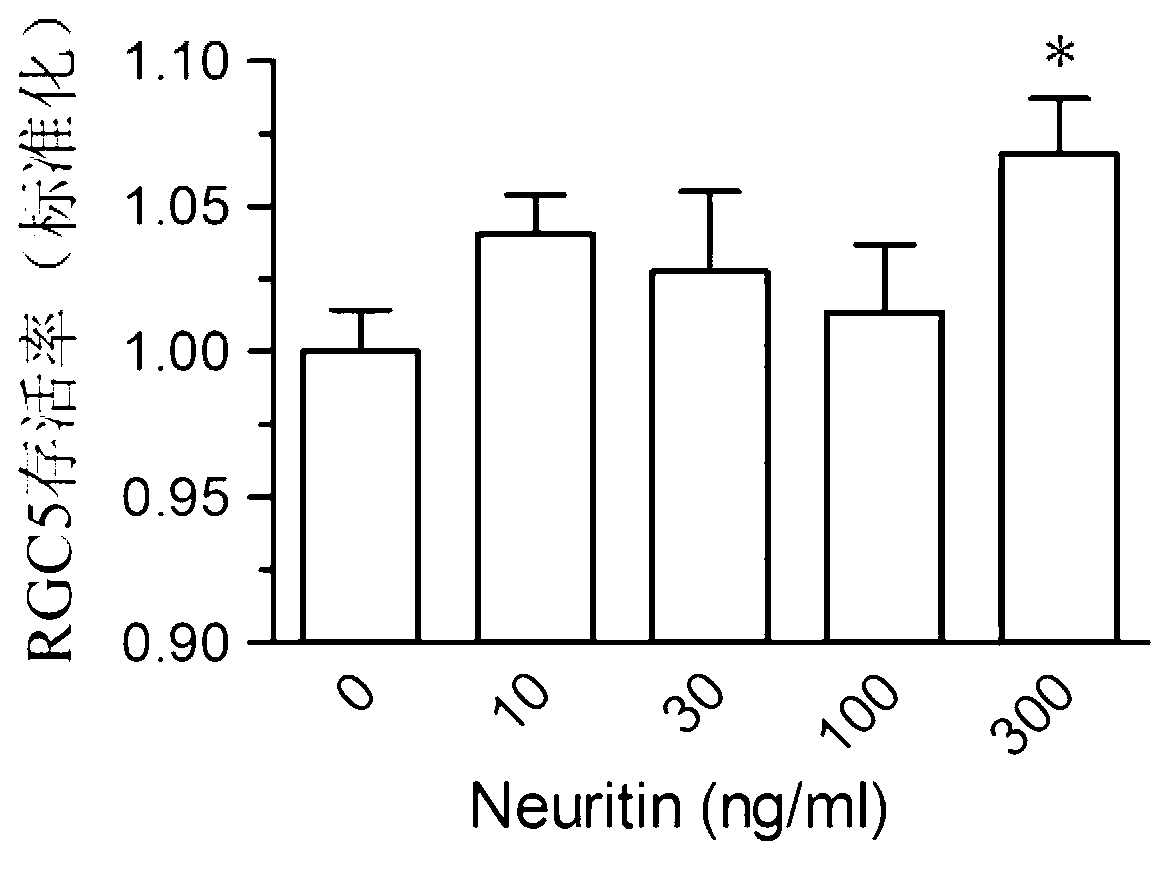Neurithin gene-carrying lentivirus and application thereof in optic nerve injury repair
A technology of optic nerve damage and lentivirus, applied in the fields of application, gene therapy, genetic engineering, etc., can solve the problem of no literature report on Neuritin gene, etc., achieve the effect of improving survival and regeneration, promoting regeneration of optic nerve, and enhancing internal regeneration ability
- Summary
- Abstract
- Description
- Claims
- Application Information
AI Technical Summary
Problems solved by technology
Method used
Image
Examples
Embodiment 1
[0044] 1. Construction of Neuritin gene lentiviral expression vector
[0045] (1) Digestion of lentiviral expression vector and target gene
[0046] The vector pLenO-RIP (purchased from Addgene) was digested with Not I and Mlu I, and the digested vector was used for vector construction. Using the cDNA clone of the CDS region of the NRN1 gene as a template, the NRN1 gene fragment was amplified by PCR, and the product was digested with Not I and Mlu I, and the vector and target gene DNA were recovered after identification by agarose gel electrophoresis.
[0047] (2) Ligation reaction
[0048]The digested lentiviral vector and the PCR product of the NRN1 gene were ligated according to the reaction system in Table 1.
[0049] Table 1: Ligation reaction system
[0050]
[0051] After the above reagents were mixed, they were ligated at 4°C for 12 hours to prepare the cloning ligation solution for transformation.
[0052] (3) Transformation, identification of picked clones
...
Embodiment 2
[0066] 1. Culture and induction of RGC5 differentiation
[0067] RGC5 is the retinal ganglion cell line of a rat born one day old (see [20] Krishnamoorthy RR, Agarwal P, Prasanna G, et al. Characterization of a transformed retina ganglion cell line. Brain Res Mol Brain Res. 2001; 86 (1-2):1-12.), immature, first induced by staurosporine to differentiate into mature neuron-like cells ( figure 1 ). RGC5 before induction was cultured in high-glucose DMEM medium and 5% serum in a place containing 5% CO 2 , in an incubator at 37°C, and the cells were passaged once a day. When used, 326nM staurosporine was used to induce for 24 hours.
[0068] 2. Overexpression of Neuritin gene and establishment of RGC5 injury model
[0069] When RGC5 is cultured to 80% confluence, add a suitable amount of lentivirus and a certain amount of polybrene at a pre-measured concentration, replace it with normal medium after 24 hours, and observe the expression of RFP with a fluorescence microscope aft...
Embodiment 3
[0081] 1. In vivo transfection of retinal ganglion cells with lentivirus and overexpression of Neuritin
[0082]The neuritin lentivirus was injected into the vitreous body, and the mice were perfused with 4% paraformaldehyde one week later. The retinal slices were taken, and immunohistochemical βⅢ-tubulin staining or cholera toxin B subunit (CTB) injection of co-localized retinal ganglion cells were used to observe the transformation. Transfection effect, the transfection efficiency is about 20-30% (such as Figure 7 shown).
[0083] Western blot and immunohistochemical methods were used to observe the overexpression and expression localization of Neuritin protein after Neuritin lentivirus transfection.
[0084] 2. Establishment of Optic Nerve Injury Model
[0085] The present invention adopts the optic nerve crush model, and uses Yasargil cerebral aneurysm clip to clip the optic nerve of adult male rats about 1 mm behind the eyeball and wound for 9 seconds. For specific ope...
PUM
 Login to View More
Login to View More Abstract
Description
Claims
Application Information
 Login to View More
Login to View More - R&D
- Intellectual Property
- Life Sciences
- Materials
- Tech Scout
- Unparalleled Data Quality
- Higher Quality Content
- 60% Fewer Hallucinations
Browse by: Latest US Patents, China's latest patents, Technical Efficacy Thesaurus, Application Domain, Technology Topic, Popular Technical Reports.
© 2025 PatSnap. All rights reserved.Legal|Privacy policy|Modern Slavery Act Transparency Statement|Sitemap|About US| Contact US: help@patsnap.com



